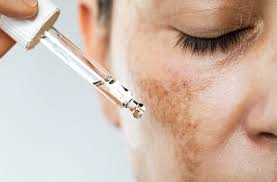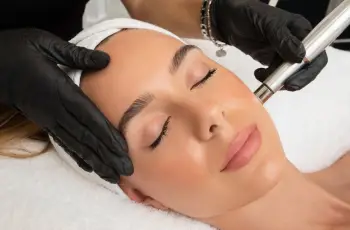
Kojic Acid in Skin Care: The Complete Guide to Brightening and Treating Hyperpigmentation
Kojic acid is a powerful tyrosinase inhibitor widely used in cosmeceutical skin care products to lighten the skin and effectively treat various forms of hyperpigmentation.
Its main function is to block tyrosinase, an enzyme responsible for melanin production, which helps reduce dark spots, uneven skin tone, and melasma.
The most popular kojic acid formulations are found in serums, toners, lotions, and creams designed for leave-on use, where the ingredient can have the most beneficial effect.
Among these, kojic acid serums are especially favored because they deliver concentrated doses of the active ingredient directly to the skin, maximizing absorption and effectiveness.
Dermatologists often recommend combining kojic acid with other skin lightening agents to boost results and achieve more even skin tone without irritation.
Some of the top-rated kojic acid products on the market include Biopelle Brightening KNR Serum, Derma Made Mela Fade, and SkinCeuticals Discoloration Defense, all formulated for targeted pigmentation treatment.
La Roche-Posay Glycolic B5 10% Serum and PCA Skin Pigment Gel HQ Free are also popular choices known for their balanced formulations incorporating kojic acid and complementary ingredients.
Kojic acid’s benefits extend beyond just lightening; it also exfoliates dead skin cells, improving skin texture while helping to reduce pigmentation irregularities.
It’s especially effective in treating stubborn dark spots, melasma patches, and post-inflammatory hyperpigmentation, making it a versatile choice for many skin types.
Kojic acid is hydrophilic, meaning it dissolves well in water and performs best in water-based products such as toners, mists, gels, and serums rather than oils or heavy creams.
Products with kojic acid concentrations over 1% tend to be stronger but carry a higher risk of irritation, so most commercial products are formulated with 1-2% for safety and efficacy.
Using kojic acid soaps or cleansers is less effective because the contact time with the skin is too brief to allow meaningful lightening to occur.
Instead, a routine combining a glycolic acid cleanser followed by a kojic acid serum offers better results by preparing the skin for absorption and delivering the active ingredient for longer periods.
Proper layering of products is critical, as certain cleansers and moisturizers can block or reduce kojic acid’s penetration into the skin, diminishing its benefits.
To optimize kojic acid absorption, it’s recommended to pair it with hydroxy acids like glycolic acid, which loosen skin cell attachments and maintain a lower skin pH for increased efficacy.
Hyaluronic acid serums complement kojic acid by hydrating and plumping the skin, supporting barrier function while kojic acid works on pigmentation.
Combining kojic acid with retinoids or corticosteroids can further enhance pigment reduction but should be done cautiously to avoid over-exfoliation or irritation.
Scientific studies have shown that kojic acid combined with glycolic acid outperforms either ingredient alone, especially when treating stubborn melasma and uneven pigmentation.
For example, research comparing a gel with 10% glycolic acid and 2% hydroquinone showed improved results when 2% kojic acid was added, highlighting the synergy between these agents.
In professional settings, kojic acid is often incorporated into chemical peels, masks, and peel pads designed to even skin tone and address pigmentation irregularities more aggressively.
At-home treatments with kojic acid masks or peel pads offer mild exfoliation and brightening effects but usually require consistent use over weeks to show visible changes.
Although kojic acid soaps are widely marketed, they generally lack the efficacy of leave-on products because rinsing the soap quickly removes the ingredient before it can act on skin pigmentation.
For those seeking the best results, avoid relying solely on kojic acid cleansers and instead use serums or creams with sustained contact to maximize lightening and exfoliation benefits.
Kojic acid works by chelating copper, which is essential for tyrosinase activity, thus inhibiting melanin synthesis and preventing new dark spots from forming.
It typically takes between 12 to 16 weeks of consistent use for kojic acid to noticeably lighten dark spots, but individual results vary depending on skin type and product formulation.
If no improvement is seen after three months, dermatologists recommend taking a 2 to 4-week break from kojic acid before resuming treatment to prevent tolerance or irritation.
Kojic acid is classified as a clean ingredient, with no known adverse effects on marine life or the environment, making it an eco-friendly choice for conscientious consumers.
Though derived from fungi such as Aspergillus and Penicillium species, kojic acid used in products is synthetically produced in labs and is not considered a natural ingredient in the strictest sense.
Structurally, kojic acid resembles hydroquinone, a potent but more controversial skin lightening agent, so individuals allergic to hydroquinone may also react to kojic acid.
Several kojic acid derivatives enhance the original molecule’s stability, moisturizing properties, and antimicrobial effects, expanding its applications in skincare formulations.
Examples include Kojic Dipalmitate, which offers improved skin tolerance and less irritation, and Kojic Monooleate, known for superior moisturizing benefits.
Kojic Acid Mannich Bases exhibit stronger antimicrobial and anti-tyrosinase activity, while Kojyl Thioether Derivatives provide anti-inflammatory effects beneficial for sensitive skin types.
More advanced derivatives like Kojic Acid Peptide combine skin brightening with anti-aging peptides, targeting multiple skin concerns in a single formula.
Some derivatives increase cell permeability and melanogenesis inhibition, making them more effective at reducing pigmentation compared to kojic acid alone.
If you are allergic to kojic acid, be cautious when trying products containing its derivatives, as similar molecular structures can trigger cross-reactivity and sensitivity reactions.
Kojic acid is particularly useful for managing melasma, a complex and stubborn pigmentation disorder, though it is rarely sufficient as a standalone treatment.
A comprehensive melasma regimen often includes sunscreen, antioxidants, and other brightening agents alongside kojic acid to provide sustained improvement.
We can help you build a personalized skin care routine tailored to your Baumann Skin Type to effectively address melasma and pigmentation challenges.
In addition to melasma, kojic acid effectively lightens dark spots caused by sun damage, acne scars, and hormonal changes by preventing melanin formation and promoting gentle exfoliation.
Kojic acid also benefits acne-prone skin by lowering skin pH, killing acne-causing bacteria, and exfoliating dead skin cells, which helps clear existing acne and reduces post-acne hyperpigmentation.
It is important to note that kojic acid’s skin lightening effects are temporary; if you stop using it, the skin’s melanin production returns to normal within days or weeks.
Therefore, regular application—usually once or twice daily—is necessary to maintain results and keep pigmentation under control over time.
Whether kojic acid is the right ingredient for you depends largely on your individual skin type and concerns; taking a detailed skin quiz can help determine if it fits your regimen.
Many skin care routines incorporating kojic acid take between 8 and 16 weeks to show visible improvements in hyperpigmentation, but patience and consistency are key.
Every step of your routine matters, including cleansers, toners, serums, and moisturizers, since some products can inactivate kojic acid or interfere with its absorption.
If your dark spots do not improve within three months, reevaluating your routine or consulting a dermatologist can provide guidance on next steps or alternative treatments.
Regarding safety, kojic acid is generally well tolerated unless you have an allergy, which can manifest as contact dermatitis, redness, or irritation in sensitive individuals.
Despite an Environmental Working Group (EWG) rating of 6-7, kojic acid’s risk profile is not fully understood, but it has a long history of safe use in food and cosmetics with few serious adverse effects.
It is used in food processing to prevent browning and promote color in fruits like unripe strawberries, highlighting its safety when consumed orally at low doses.
However, caution is advised because one Japanese study linked very high oral doses in genetically susceptible mice to liver tumors, though this has not translated to humans.
Kojic acid should never be injected as this can cause severe side effects such as convulsions, which is why it is strictly used topically in skin care.
Topical products with 4% kojic acid are more likely to cause irritation, so most over-the-counter serums maintain lower concentrations between 1% and 2% for a better safety profile.
Kojic acid is considered safe for use during pregnancy due to its minimal systemic absorption and lack of harmful effects on fetal development.
Common side effects include allergic reactions, contact dermatitis, stinging, redness, and irritation, particularly when combined with other exfoliants or used in high concentrations.
If you have a known hydroquinone allergy, you are more prone to reacting to kojic acid, so a patch test is highly recommended before starting treatment.
There is no evidence that kojic acid causes cancer, unlike hydroquinone which has had more controversy surrounding its safety profile.
The ideal time to apply kojic acid is in step three of your morning and evening skincare routine, typically after cleansing and toning but before moisturizing or applying retinol.
In some cases, kojic acid may be formulated within a moisturizer or retinol product, but generally, it is best applied as a standalone serum for optimal absorption.
We offer personalized guidance to help you build an effective skincare regimen, including detailed instructions on when and how to use kojic acid based on your skin type and concerns.
Taking a skin quiz can help identify whether kojic acid is suitable for your skin, ensuring you get the best results with minimal risk of side effects or irritation.


